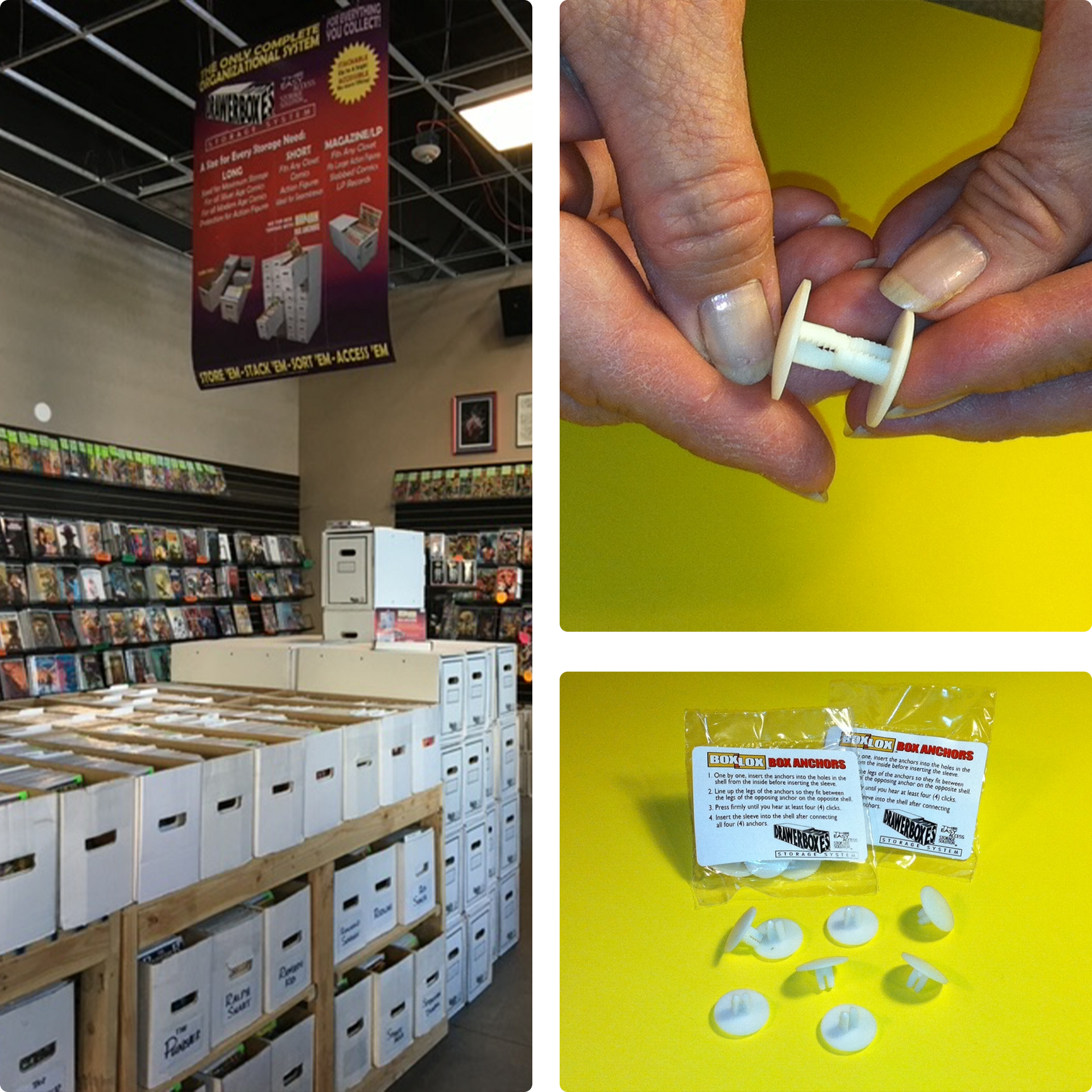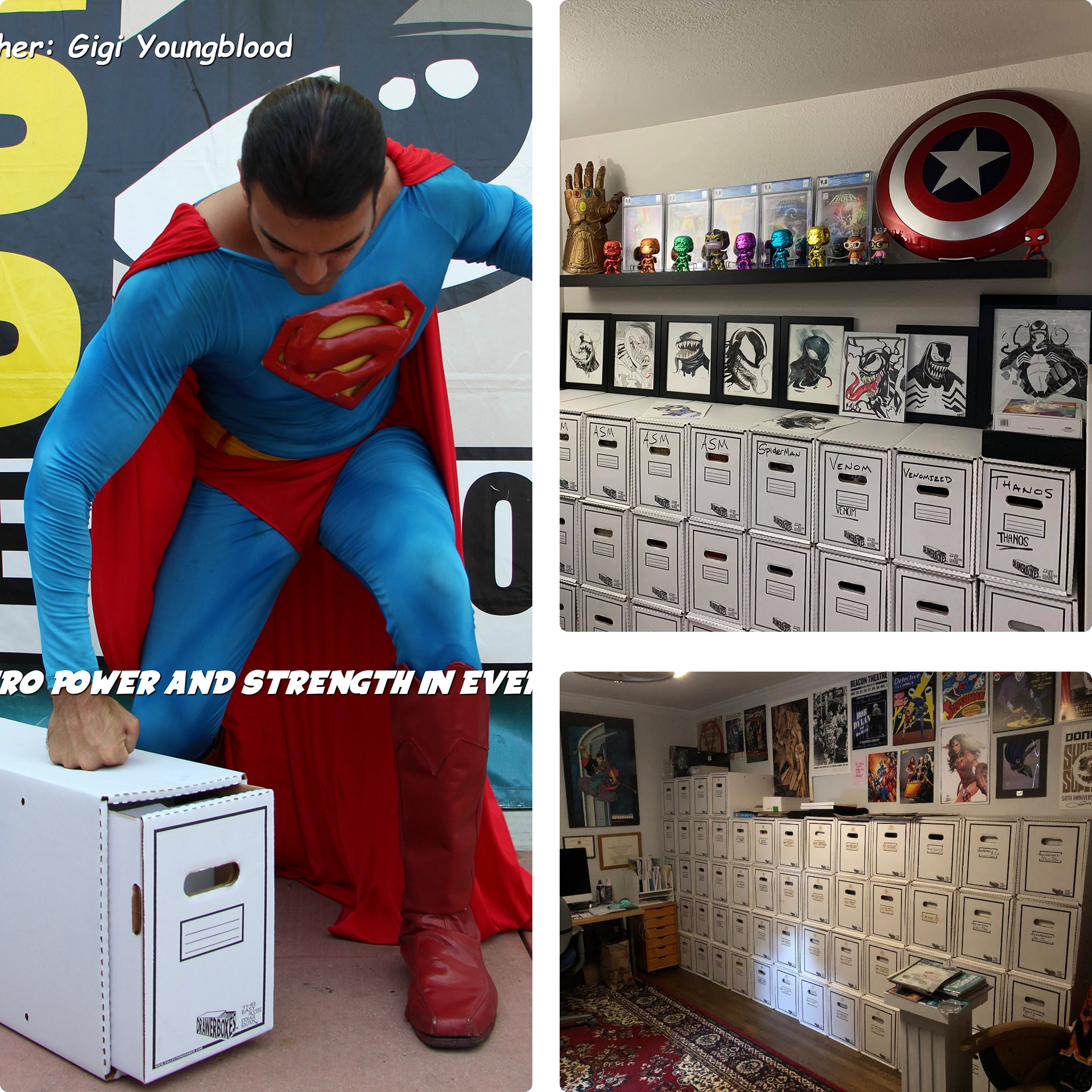Welcome to Collection Drawer Co... "Details are not details - they make the product." - Charles Eames
Comic and Magazine Preservation
IF YOU LIKE THESE ARTICLES AND WANT TO READ MORE, E-MAIL US AT RICH@COLLECTIONDRAWER.COM TO BE ADDED TO OUR E-MAIL LIST.
ARE "ACID FREE" BOARDS REALLY ACID FREE?
Most comic and magazine collectors use backing boards to protect their collectibles from damage by bending. But what if they are causing more harm than good? What if they are adding to the acidity and resulting yellowing of the items you are trying to protect? The sad truth is most backing boards are. Don't believe the packaging when it claims that the boards are "acid free" because only two brands really are. And one brand qualifies for "Pants on Fire". Here is the best research study we have found: https://www.cgccomics.com/boards/topic/205695-are-acid-free-backing-boards-truly-acid-free-time-to-ph-test-amp-find-out/

TOP 10 WAYS TO DESTROY YOUR COMICS AND MAGAZINES
-
Exposure to Sunlight
Direct sunlight can fade the vibrant colors and degrade the paper quality, significantly reducing their appeal and value.
-
Moisture and Humidity
High humidity or water exposure can cause pages to stick together, mold growth, and even disintegrate paper fibers.
-
Improper Storage
Storing comics and magazines without protective sleeves or in environments prone to pests and dust can accelerate deterioration.
-
Physical Damage
Bending, tearing, or folding pages carelessly can irreversibly damage the structure and appearance.
-
Temperature Fluctuations
Extreme temperatures can warp and damage the paper, especially when combined with high humidity levels.
-
Chemical Exposure
Household chemicals, smoke, and even acidic paper or covers from other items stored alongside can transfer harmful substances.
-
Poor Handling
Oils and dirt from hands can stain and degrade the paper and inks over time. Always handle with clean, dry hands or use archival gloves.
-
Tape Repairs
Using non-archival tape for repairs can cause further damage over time, including yellowing and increased acidity.
-
Stacking and Pressure
Heavy stacking or improper shelving can lead to warping and bending, distorting the original form.
-
Neglecting to Digitize
While not a physical form of destruction, failing to create digital backups can mean losing access to their content forever if physical copies are destroyed.
You can also hear our discussion on the I Want More Comics podcast here: http://podcast.iwantmorecomics.com/?name=2016-08-28_episode_017_mixdown.mp3
It’s not surprising that there is quite a bit of confusion about how to best protect your comic or magazine collection. The Internet has a profusion of suggestions, everything from comments on message boards to blogs to websites reputing to be “experts” on the topic. Unfortunately, most of this information is incorrect despite the sincere efforts of the writers. There seems to be two major causes for this: collectors who forget that paper is subject to a variety of climate issues and what may work in their area is inadequate elsewhere. Additionally, many of these writers have only been collecting for a short period of time. What works for 2 or 3 or 5 years may be destructive 10-20 years later. The point of protecting your periodicals is to avoid problems over the long term.
We at The Collection Drawer Co. have one significant advantage because we are collectors ourselves and have been collecting for over 50 years (egads!), well before the first preservation products were invented. During that period we have tried a number of techniques, that is, we have made every mistake in the…ummm… magazine. This has given us the opportunity to see first hand what works and what does not over a prolonged period of time with a variety of approaches. So these are some things we have learned over that time. Keep in mind that your mileage may vary for all the reasons listed above.

BUT WAIT! -- WE HAVE MORE TO SAY
By far the single most important technique in preserving your comics and magazines has nothing to do with spending money on costly products. It is very simple. Always store your collectibles in a cool, dry place. Heat and moisture are paper’s worst enemy and the newsprint used in older comics is particularly vulnerable. A warm air temperature can cause the paper to turn yellow in less than a year. One of the most valuable collections ever found is the Mile High Collection, owned by Edgar Church and uncovered after he passed way by Chuck Rozanski. A significant characteristic of those issues are the whiteness of the pages despite being printed on cheap newsprint in the 40’s. But this is not surprising when you realize that they were stored in his basement, the coolest area of the house, and he lived in Denver, Colorado, known for its dry climate.
Storing print collectibles in a cool area is easy as long as you have air-conditioning or a basement (assuming it will not flood! You DO have everything raised off the floor, right?!?) but humidity is a bigger challenge since some areas of the country tend to be quite humid. Some collectors suggest using silica packets such as those found in shoeboxes, electronic equipment boxes and so forth. These do not work. They are only capable of absorbing a small amount of moisture and once they reach their maximum saturation cease to absorb. We have investigated materials that can be baked to dry them out but even these seem to have only limited usefulness.
The most effective method to reduce humidity is to purchase a dehumidifier and have it run continuously in the area where the collectibles are stored. Circulation in this area should also be kept to a minimum so moist air is not introduced. The key here is in realizing that if your area is humid, it is always humid in greater or lesser degrees. The air is constantly circulating in and around your collectibles, so the moisture must be constantly removed from the air. Note, too, that the cooler the air is the less moisture it can hold, so reducing the temperature even further helps as well.
The second most common damage collectors that we know have experienced is bending. Step one in preventing this is to never stack comics or magazines lying flat. This will cause the spines to curl and can occur even if they are stacked for a short period of time. Even standing periodicals on their “nose” end (the end you open them from) will cause warping over time. Comics and magazines should always be stood on the bottom (or top) end with the spine vertical so it provides some support. To prevent the other causes of bending the next most important item you need (besides our BoxSort Upright Dividers) is backing boards. But care needs to be taken in their selection and use as well since they can introduce more acidity to your comic or magazine.
We’ll write more about that the next time. In the meantime, let’s us know at Rich@CollectionDrawer.com if you find this column useful or would like to be added to our newsletter about preservation.

Introducing the new DrawerBoxes by The Collection Drawer Co., a groundbreaking storage solution for comic books and collectibles. These innovative boxes provide efficient space utilization and convenient organization for extensive collections. Optional BoxSort™ Rails are available for enhanced sorting capabilities. Perfect for collectors in search of simplified storage solutions.
QUICK LINKS
© Copyright 2024 All Rights Reserved | The Collection Drawer | Designed by Lingows

